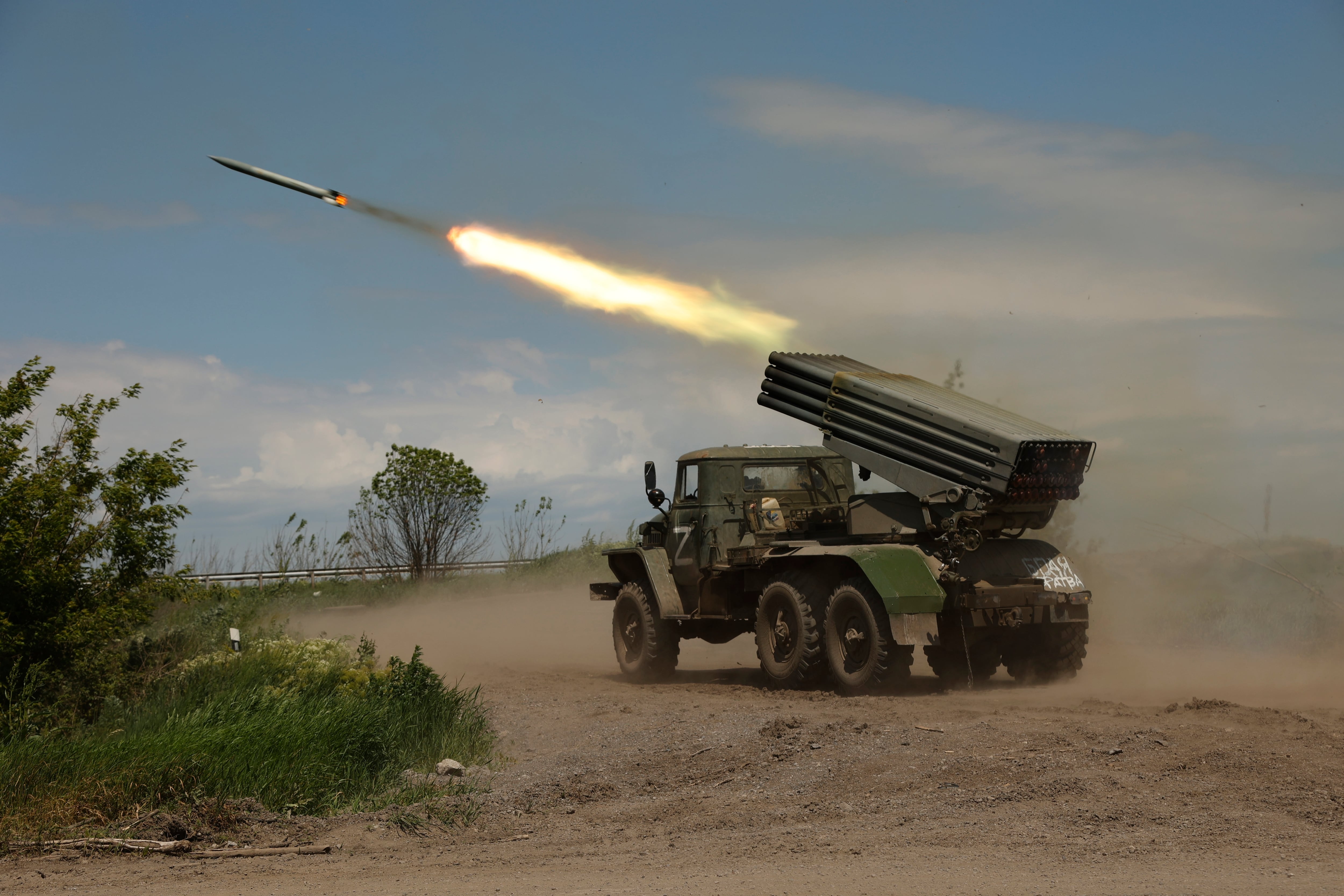WASHINGTON ― The changed security environment in Europe will mean increased demand from its allies for integrated missile defenses, early warning systems, air-to-air missiles and intelligence, surveillance and reconnaissance platforms, a senior U.S. defense official said Thursday.
The assessment comes as rattled European countries are committing to boost their militaries in the wake of Russia’s invasion of Ukraine. U.S. government officials, while racing to send weapons to Ukraine, are also working to backfill allies who have sent arms to Ukraine or are keen to strengthen their conventional defenses.
“Globally, that demand is increasing, and I do think we will continue to explore with our partners how they want to look at that,” Jed Royal, the deputy director of the Defense Security Cooperation Agency, said during a call with reporters. He said needs vary by country.
While the State Department has primary responsibility for approving arms exports, the DSCA, a Pentagon agency central to foreign military sales, has taken a key role in U.S. and allied efforts to send and replace billions of dollars worth of weapons both from existing military supplies and through new procurements.
“DSCA wants to make sure we are not only thinking in terms of backfilling the United States but certainly backfill[ing] for allies and partners as they continue to support Ukraine as well,” Royal said. “I spend a lot of time with our allies and partners and ... the demand is certainly coming in a really significant way.”
Potentially driving demand, NATO announced this week it plans to increase the size of its rapid reaction force from 40,000 to 300,000 troops by next year. Forces would be based in their home countries but deploy further east, where the alliance would stockpile equipment and ammunition.
Beyond air defenses, the focus of Europe’s defense investments should shift toward networks, strike weapons and munitions, logistics and base construction, Capital Alpha Partners Managing Director Byron Callan said in a note to investors Thursday.
“Open questions remain about how the Russian threat is assessed in 2025-30, how U.S. commitments to NATO are weighed depending on the 2024 [U.S. presidential] election outcome, and views on the needs and capacity of the European defense industrial base,” Callan said.
RELATED

With an eye on the health of Europe’s defense industry, the European Union has sought to incentivize deals among its members. Earlier this month, EU officials were expected to meet with member nation delegates to craft ground rules for a €500 million (U.S. $523 million) fund meant to promote quick purchases of bloc-made military equipment.
The U.S. has been working with more than 50 countries to see what weapons they can send to Ukraine. Though the initial focus has been on Russian-made weapons Ukrainian forces were familiar with, Ukraine has received more advanced weapons and the training to go with them as the war’s continued.
DSCA has been part of the Pentagon’s internal efforts to find and fix defense industrial base constraints exposed by the Ukraine effort, and it’s put new focus on acquiring nonstandard systems for allies. That has included the AeroVironment Switchblade 300 loitering munition for Ukraine, Royal said.
“We found that there’s a lot of systems that are not standard systems that the U.S. acquires for itself that are nonetheless very valuable and worthwhile to our partners,” Royal said. “So we’re looking at those non-program-of-record systems and making sure that we are using our program offices to prioritize those requirements for allies and partners just as we would for more standard acquisition systems.”
Beyond Europe, India and other importers of weapons from Russia, the world’s No. 2 arms vendor, have had to rethink those arrangements as widespread sanctions cripple Russia’s ability to make and export defense equipment. Without mentioning any specific countries, Royal echoed other U.S. officials who have said the west, if not the U.S., might eat into Russia’s market share.
“We need to be able to demonstrate the reliability of the Western industrial base, the U.S. industrial base, a friendly industrial base, in order to be able to make sure that allies and partners globally can find an alternative to Russian systems in the future,” he said. “That’s very much part of our thinking as well.”
Joe Gould was the senior Pentagon reporter for Defense News, covering the intersection of national security policy, politics and the defense industry. He had previously served as Congress reporter.







